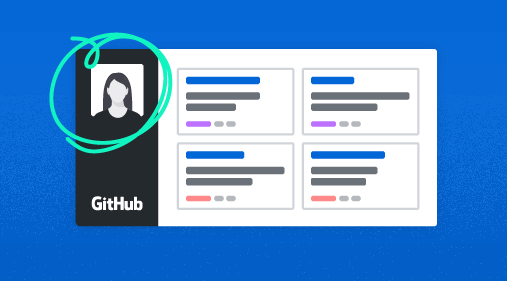How to source and recruit software developers on GitHub

To find talented developers who are a great fit for your company, you need to be thoughtful about your sourcing efforts. Referral networks and LinkedIn remain effective ways to connect with strong tech candidates, but top programmers already get a ton of outreach from sourcers and referral bonus-seeking friends.
You want to build meaningful relationships within the technical community instead of blasting out generic emails. And you want to see programmers’ actual projects and code so you can differentiate the good from great. Give GitHub a try. While not necessarily branded as a recruitment site, it can help you get more information about coders’ projects, interests, and collaborations. Here at Codility, we use GitHub (among other sites) to source and recruit developers. In fact, we’ve filled two technical positions using GitHub in the past year.
Contents
What is GitHub?
GitHub is a site that hosts a community of developers who can showcase the projects they’ve worked on and the code they’ve written. You can also see their contributions to public collaborations, like open-source projects. Make sure you take advantage of the site’s social aspect, so you can form positive relationships with potential candidates and transform GitHub into your new favorite recruitment site.
Sourcing on GitHub
There’s a ton of information on an individual’s GitHub profile, but the most relevant is the repositories section. Here, you can see their forks (projects they’ve contributed code to) and sources (things they’ve built or are building.)
Here are specific things to look for when sourcing software developers on GitHub:
- A long history of contributing to big projects and big libraries. This shows that they’re not just a user of certain languages or initiatives, but that they understand them deep down to the roots and actively work to make them better. Some great examples of open-source project participation are contributions to Django, Webpack, Firefox, Chromium, and React.
- Sharing pet projects with the world. Programmers who do solo projects and then publish them signal that they don’t work in isolation and that they want to share and collaborate with others. They also show that they are programmers outside of work, not just at work.
- What kind of issues they report and how they report them. Even if software developers haven’t started up or worked on many projects, you’ll notice their passion and drive when they report software issues. Pay attention to whether they’re just complaining, or if they’re writing meaningful requests and issue summaries. The latter demonstrates an ability to communicate around an obstacle and a willingness to work with others to alleviate problems.
- Stars. Each project a GitHub user has on their profile can earn “stars” from peers. Use star ratings to gauge community response to projects coders have worked on or created. Use the following numbers as thresholds: 100 stars is solid and 1,000 is programmer-famous. But keep in mind that it’s generally easier to earn stars for forks on high-profile projects than on sources, so don’t use stars as the only indicator.
- Contribution graph. The greener the better. You can use the contribution graph as a quick proxy for programmer activity levels in the coding community, and then delve into other parts of their profiles for specifics.
- Followers. If someone has a large following it means they’ve done a significant amount of work on GitHub and other programmers are drawn to their work. More than 50 followers indicates a decent following, but keep in mind some people are really good at corralling their friends and family to their profiles.
How to recruit on GitHub
So, on your quest to find developers to reach out to, you’ve found some really talented, collaborative people you want to connect with. What now?
Do not copy/paste the same cold email you use in your LinkedIn Recruiter account.
Form a strategy instead. After all, the goal here isn’t to reach out to as many coders possible, as quickly as possible. It’s to build relationships with people who might potentially join your team. And that starts with a genuine, thoughtful first email.
Talk to your technical interviewers or hiring managers first. Provide them with the list of GitHub profiles of people you think are good fits, and then co-author cold emails together. And most importantly, have your hiring manager be the one to send the email because they have more technical credibility in the coding community.
When talking about opportunities at your company, include the following in your messages:
- What technology stack you use
- The challenges your engineering organization, product, and company face
- How a new hire can grow and develop
- Any cool events you host, like hack days or meetups
- Opportunities to explore new technologies and tools
- Links to your own developers’ GitHub profiles, especially those who are active
- How a new hire can make an impact on the team
Using these tactics, the tech recruiting team here at Codility achieves a 30% response rate when reaching out to developers on GitHub.
Of course, if you’ve found a superstar that seems like a good fit for a role that’s particularly hard to fill (think Director of Mobile Engineering), it might be wise to not send an email like this at all. Instead of sending a sourcing email, even if it’s a highly personalized and well-thought-out sourcing email, start with expressing interest in projects they’ve contributed to or are currently working on. This will spark a more natural conversation, and if it makes sense, your hiring manager can also speak about the open role at your company later. Do this right and you may capture the attention of 10x developers.
Use the interview process to hire the best developers
You’ve done a good job so far sourcing and contacting skilled programmers on GitHub. Keep up the momentum by ensuring that:
- Your entire recruiting process is a great experience and that you keep candidates engaged
- You are running optimized technical interviews to get the most out of in-person interviews
- You’re balancing objective and subjective measures when assessing candidates
Hiring teams need to be increasingly resourceful and strategic in how they look for tech talent. Use this guide to identify strong programmers on GitHub, study their online activity and then send a personalized email to kick things off. Combined with other sourcing methods, you now have a well-rounded game plan and a new go-to recruitment site to find and connect with your next stellar engineering hire.
Ruslan Khalilov, Technical Recruiter @Codility, is passionate about connecting people to their dream jobs. He focuses his efforts on finding great technical candidates, leveraging his experiences in marketing for employer branding and understanding the European startup ecosystem.
Frequently asked questions
- How do I recruit the best software developer?
- The best ways to fill your hiring pipeline when looking for software developers are through personal networks, job boards, and social media. These three sources accounted for the majority of all software developer candidates and helped recruiters find candidates quickly.
- How do I recruit software developers on LinkedIn?
- The key to landing top software developer talent is through LinkedIn. Post your job openings on this social media platform and share engaging content that will keep developers coming back for more, like InMail or group messages in specific communities dedicated solely towards programmers/developers.
- Is it hard to recruit software engineers?
- If you want to get ahead in the tech industry, it's time for a change of strategy. You need more than just talent - your company needs an innovative approach that will impress these engineers with what they're missing out on by not working at your company!




